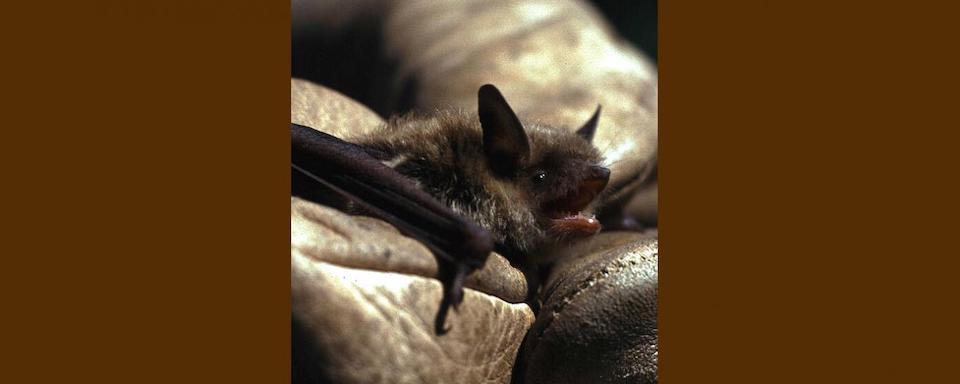
The fungus that causes white-nose syndrome in bats has been found in North Dakota/North Dakota Game and Fish
The fungus that causes white-nose syndrome in bats has been detected in North Dakota, according to the National Park Service.
To date, WNS has been confirmed in bats from 33 states and seven Canadian provinces. North Dakota joins Wyoming, Mississippi and Texas as states that have detected the fungus, but not yet confirmed cases of WNS. The fungus, Pseudogymnoascus destructans, (Pd) causes WNS, named for the powdery, white fungus that often appears around infected bats’ muzzles.
Bats are important for healthy ecosystems and contribute at least $3 billion annually to the U.S. agriculture economy through pest control and pollination. WNS has killed millions of bats in North America —with mortality rates of up to 100 percent observed at some colonies—since it was first seen in New York in 2006.
“Detection of the fungus in North Dakota this May demonstrates the continued expansion of this invasive pathogen through North America,” said Jeremy Coleman, National White-nose Syndrome Coordinator for the U.S. Fish and Wildlife Service, which leads the national response to WNS. “As Pd continues to spread into new territory, biologists from many agencies and institutions are working together to understand and manage the impact of WNS on our native bats.”
The National Park Service supported the operation with funds dedicated to WNS response in national parks to actively protect bats and their habitats.
The fungus was detected in North Dakota during field examination of live bats using swab samples that were sent to the Colorado State University Veterinary Diagnostic Laboratory for testing. Those results were repeated in follow-up tests by the U.S. Geological Survey’s (USGS) National Wildlife Health Center. While these results confirm the presence of the fungus, they do not confirm that the bat had WNS disease, which can only be confirmed by microscopic examination of tissue samples. Tissue samples were not collected from this individual bat.
The National Park Service, U.S. Fish and Wildlife Service, USGS, University of Wyoming, and North Dakota Game and Fish Department will continue to work together to screen for Pd and WNS in North Dakota.
Exactly where the bat that was found with the fungus came from isn't known.
“It’s difficult to determine where this individual bat encountered the fungus, because these bats were captured after they emerged from winter hibernation when they already could have traveled hundreds of miles this spring,” said Patrick Isakson, biologist with North Dakota Game and Fish Department.
Little brown bats are common in North Dakota, although no known hibernacula, a winter roosting area for hibernating bats, has been found in the state, according to the North Dakota Game and Fish Department.
State and federal agencies are asking for help to stop the spread of this disease. The best way to help protect bats is by staying out of caves and areas that are closed. If you see a dead or sick bat, notify park rangers or state biologists. Do not handle bats. Additionally, you can help slow the spread of WNS by decontaminating your caving and hiking gear and boots, and by not moving potentially contaminated clothing and equipment to areas where Pd is not known to occur. Visit https://www.whitenosesyndrome.org/ for more information.
The agencies and organizations of the White-nose Syndrome Response Team are dedicated to finding ways to reduce the effects of WNS and improve survival of bats. Several potential solutions are under development, including habitat modification, biologically derived antifungal agents and a vaccine for bats.
For more information about WNS, see https://www.whitenosesyndrome.org/. For information about WNS response in the National Park Service, seehttps://www.nps.gov/subjects/bats/white-nose-syndrome.htm.



Add comment